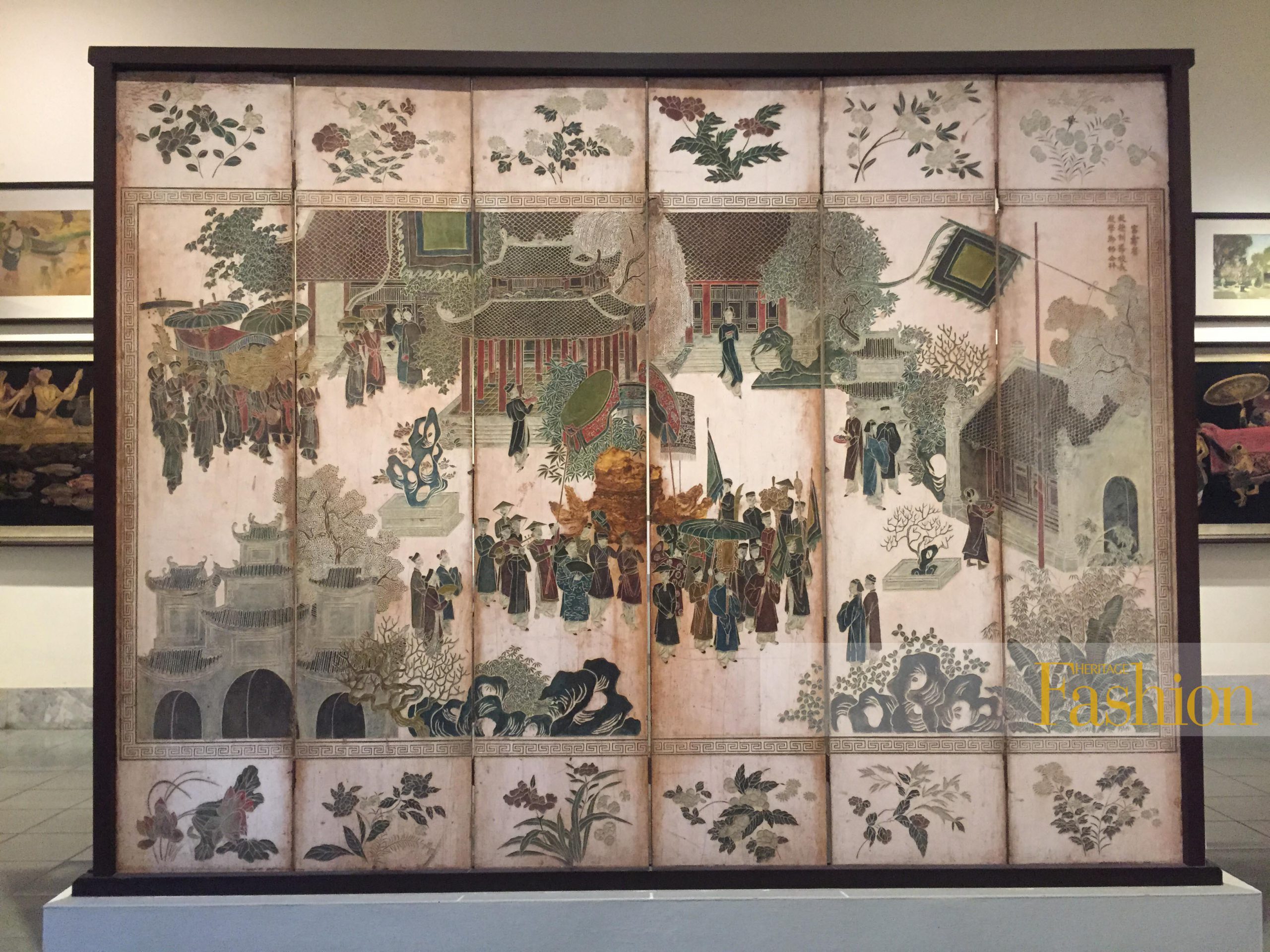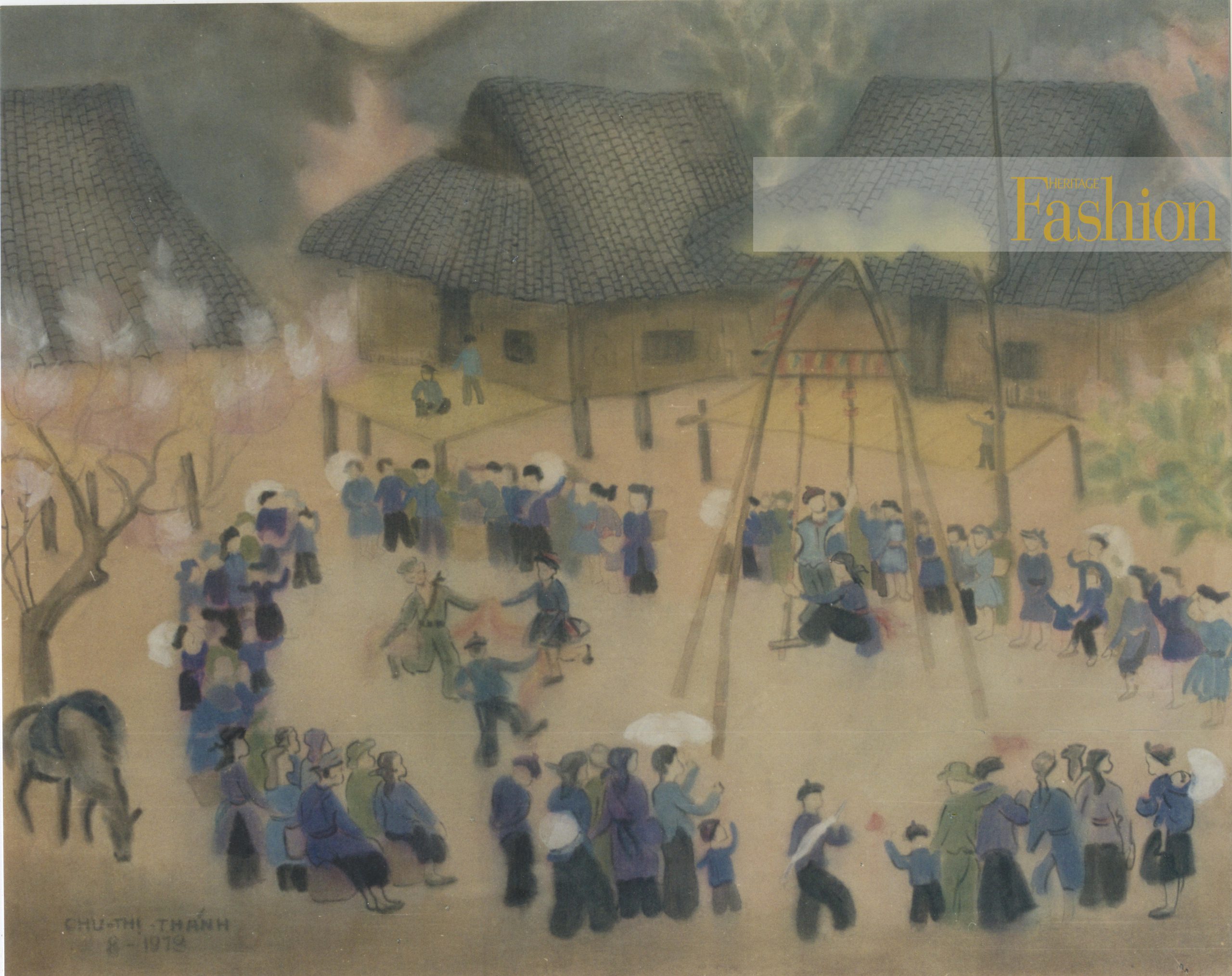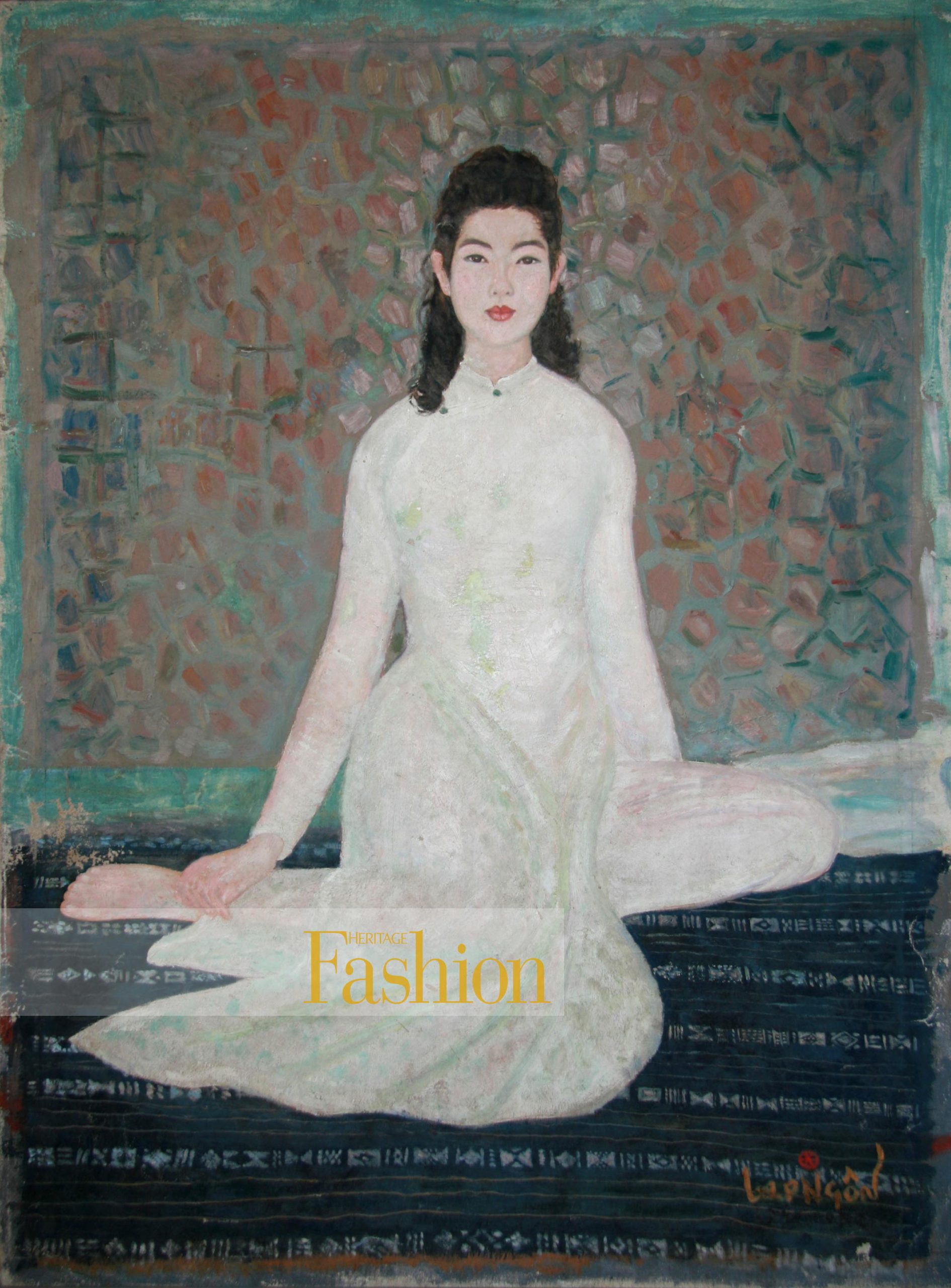Story: Fine art researchers Nguyen Hai Yen
Images from the Vietnam National Museum of Fine Arts
Visitors to the Vietnam Museum of Fine Arts in Hanoi will find a common theme in works spanning from the Indochinese generation to younger artists: Spring festivities.

Traditional lacquer paintings such as “The Pagoda Festival” by Le Quoc Loc and “Festival of Chem Temple” by Nguyen Xuan Bai were done in the 1930s and depict the rituals of spring visits to the pagoda, with the elderly, monks and followers sincerely dedicating their flowers and incense.
Painter Nguyen Tien Chung and his radiant lacquer painting “Two Maidens,” meanwhile, depicts a lively scene of two young girls under the spring sun, their áo dài fluttering in the breeze. Two Muong girls in the work “Going to Festival” by Nguyen Van Ty are portrayed wearing their ethnic costumes with gorgeous necklaces and bracelets, while a purple mountain, white storks and half-shut apricot blossoms sketch out a tranquil spring scene.

Artist Nguyen Tu Nghiem is known for his works that bring together a symphony of colors under the theme of festivities. He spent a great deal of time researching everything from rustic temple carvings to the refined and sophisticated fine arts of the Ly and Tran Dynasties, the expressive sculpture of the Le Dynasty and the regal and exquisite atmosphere of Nguyen Dynasty arts. Lacquer paintings by Nguyen Tu Nghiem are given prominent display at the Vietnam Museum of Fine Arts, including a work registered as a National Treasure, the painting “Giong.”
“Ancient Dances” depicts a theme that stayed with Nguyen Tu Nghiem from his adolescent years, when he watched robust festivities of his village across alleyways and village lanes. The painting, finished in 1972, includes old and young, men and women intertwined in rhythmic movements, where feet seem merged as one, and figures of dancers fade away into dim sparkles.

Another pair of paintings both depict the joys of festivals through the alcoholic spirits that are part of the celebrations: “Liquor” is a cubist work by painter Ta Ty, while “Pipe Liquor” is an oil painting by Ka Kha Sam. One is young, the other old, but the intoxicating effect of the liquor and ensuing festivities in both cities or remote rural area share a role in welcoming the spring.
Finally, upbeat sounds seem to echo all over the landscape in the “Sounds of Gongs” (Kim Cham, silk, 1978), “The Sounds of Central Highlands Gongs” (Xu Man, lacquer, 1980) or “The Còn Tossing Festival” (Chu Thi Thanh, powder, 1979). These paintings represent the efforts of contemporary artists to cherish their traditional village festivals, many of which are fading from memory.










